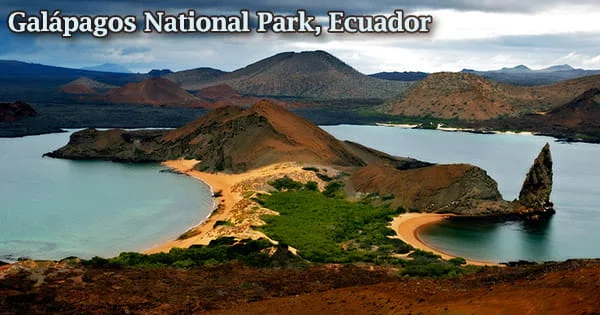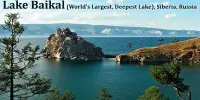The islands of the Galápagos National Park (Spanish: Parque Nacional Galápagos) are located about 500 miles (926 kilometers) west of Ecuador. Ecuador’s first national park and a UNESCO World Heritage Site, the park was founded in 1959 and began operations in 1968.
Approximately 97 percent of the Galapagos Islands’ total territory is protected as part of the National Park system and remains uninhabited. The populated sections of Santa Cruz Island, San Cristobal Island, Isabela Island, and Floreana Island make up the remaining 3% of the Islands.
The Galapagos Islands are located inside the national park’s limits, which cover 3,040 square miles (7,880 sq km). On Santa Cruz Island, the Galápagos National Park Service had its first Superintendent, two officers, and six park rangers in 1971. There are 21 islands in all, with 18 of them being deemed noteworthy.
The Galápagos National Park Service established its first management plan and a team of officials in 1974, in accordance with the organic organization established in 1973, with a Superintendent, two conservation officers, and forty park rangers to meet management objectives. The Charles Darwin Research Station is located in Santa Cruz.
It established the first park service in 1967, but it took another four years for the Galapagos National Park to be assigned its first Superintendent and park rangers as part of the National Park System. The Galapagos Islands cover a total area of 17,000 square miles (45,000 square kilometers) and cover a total area of square miles (7,995.4 square kilometers).
Galapagos National Park is the country’s first national park and a UNESCO World Heritage Site. The park now has a sophisticated management system in place, as well as hundreds of Park Rangers. The Galápagos Islands Natural Heritage for Humanity was certified by UNESCO in 1979, and the Park Service was charged with executing permanent park conservation and defending the islands through the Superintendent of the Park.

Throughout their visit to the Galapagos National Park, a local tour guide must escort visitors. Remember that every living species on the island is unique, and we must protect the island’s unspoilt flora and wildlife refuge. Baltra, Floreana, San Cristobal, and Santa Cruz are the populous islands, accounting for around 3% of the total area of the Galapagos Islands.
Tortuga Bay, on Santa Cruz Island, about a 20-minute walk from the main water taxi pier in Puerto Ayora, is a favorite among Galapagos visitors. The walking trail is 1.55 miles (2,490 meters) long and open from six a.m. until six p.m. The Galapagos National Park has implemented stringent controls on tourism, immigration, and the development of existing populations in Galapagos since 2007.
The Galapagos Islands are known for its biodiversity, which includes Galapagos land iguanas, marine iguanas, and the huge Galapagos tortoise. The national park’s marine iguanas are the only ones who swim and eat from the sea.
The green turtle, blue-footed booby, waved albatross, Galapagos hawk, and Galapagos penguin are all popular species. Divers and snorkelers can expect to see sea lions, whale sharks, hammerhead sharks, and a variety of other marine animals.
Because the Galapagos Islands comprise 45,000 square kilometers (17,300 square miles) of total ocean area, day-tour companies must meticulously organize every minute. Visitors must check in and out at the Galapagos Park Service office at the start of the trail. Along the lava rocks of Tortuga Bay, marine iguanas, galapagos crabs, and birds can be spotted.
There is a secluded cove where you can swim and see white tip reef sharks in groups, little fish, birds, and occasionally the massive Galapagos tortoise. It established Galapagos Islands National Park to conserve the islands’ unique indigenous wildlife and the ocean waters surrounding them.
The protected region also invests in Charles Darwin’s historical scientific observations, which have helped us better understand the animal life. The national park protects the world’s most famous endemic species, which appear nowhere else on the planet. It is critical that the international community do everything necessary to maintain and protect these island environments and their spectacular natural displays.
















